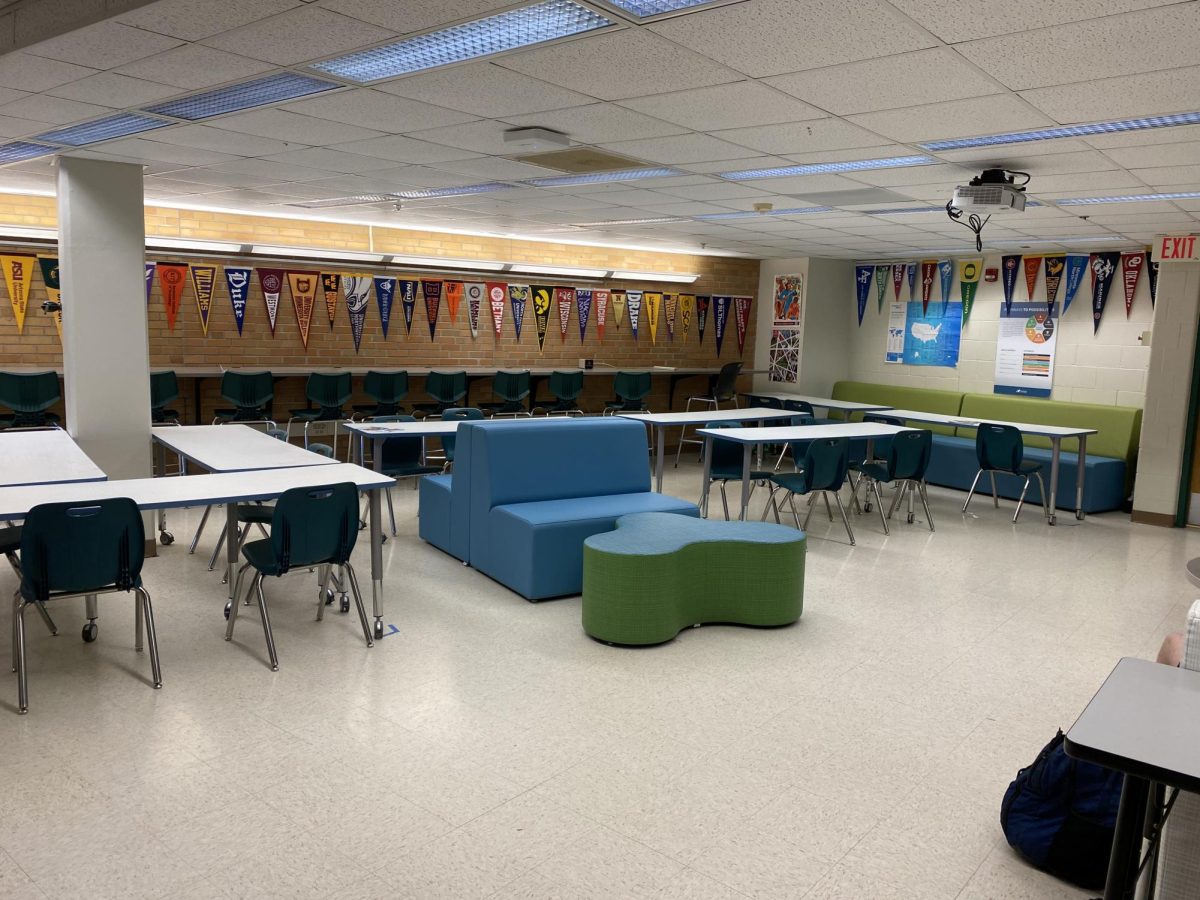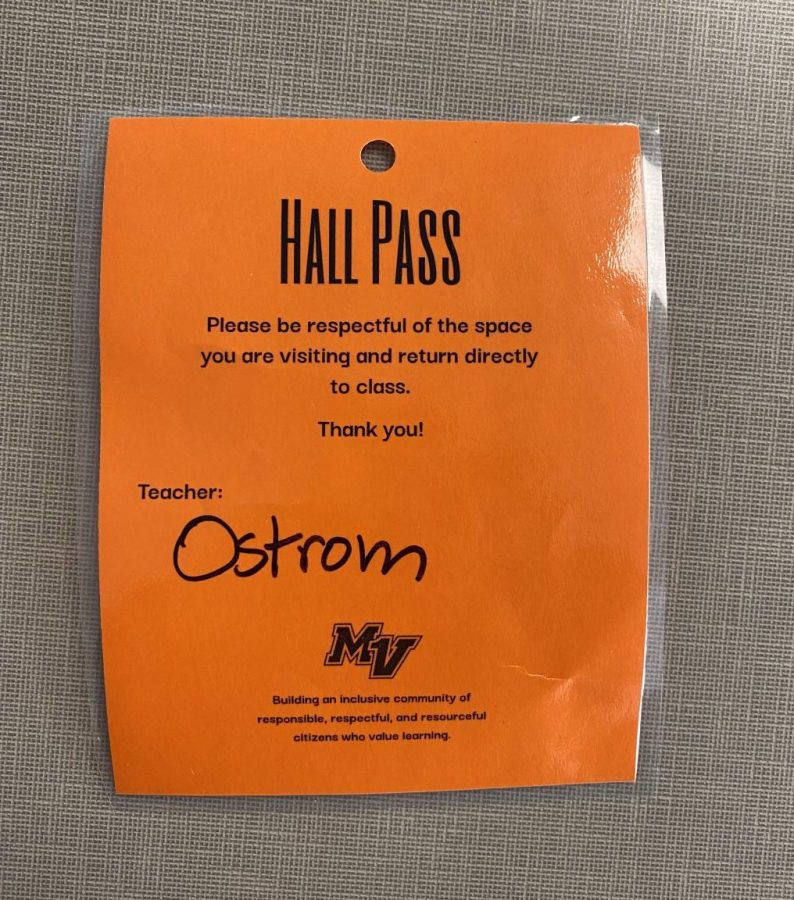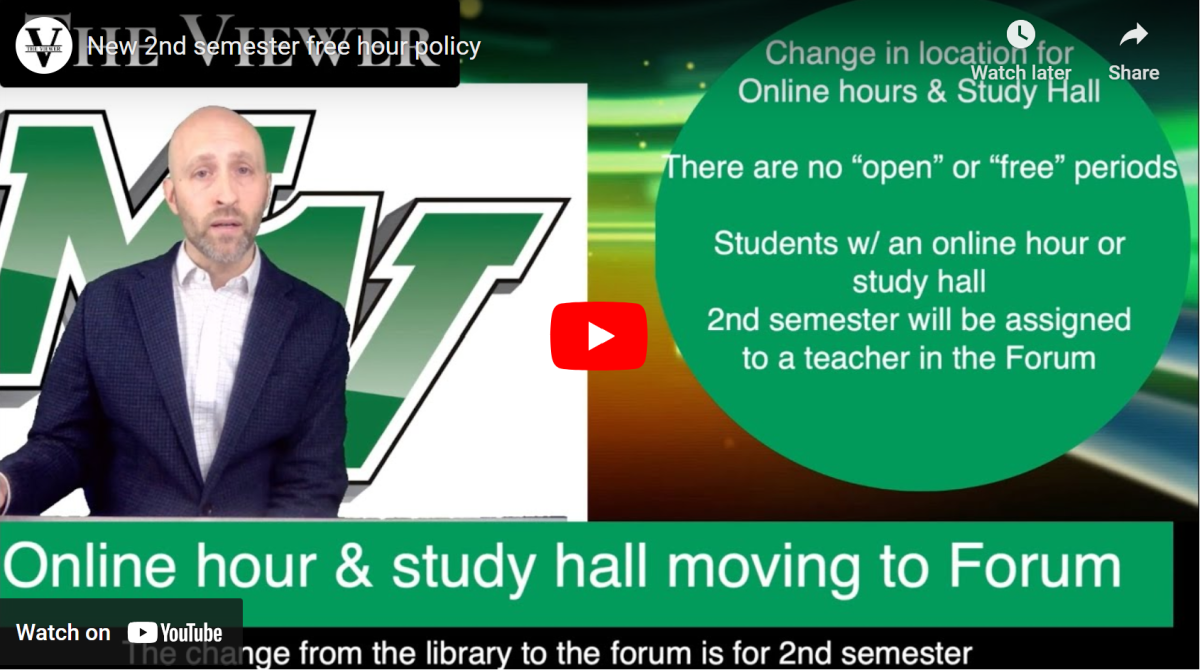Teachers face backlash
Teachers in the United States face growing challenges in curriculum and time constraints regarding how they instruct English. Facing these challenges requires an accurate diagnosis of why students struggle to maintain their interest in reading in order to improve the falling literacy rates widespread across Minnesota and the country.
Some teachers believe that the policy of not penalizing late work is a major factor, diminishing the incentive for students to apply themselves in English classes. “If something was late [two years ago], it was 10% off for each day that it was late […] and we’re not allowed to do that anymore […] I think if we went back to holding kids more accountable, then I think we could get back to teaching at a level and expecting kids to perform at a level that we used to,” said Rebecca Hauth-Schmid, Mounds View High School English teacher.
The leniency towards late work in English classes is particularly problematic due to fewer traditional tests that are unaffected by the late work policy. In subjects like math, however, where there are typically more frequent assessments, students have fewer chances to turn in work late without facing consequences in the form of reduced grades.
Additionally, teachers, parents and school boards are at odds with each other regarding the literature being taught in school. There is a growing effort by parents across the country to remove literature that touches on subjects that are deemed too “controversial.” “If parents don’t agree with something that’s being taught with something that’s in a book, they can just say, ‘Oh, I don’t want my students to read that book,’” said Hauth-Schmidt.
Parents have become more influential in curriculum development, especially in English courses. When parents exempt their children from certain books, teachers must come up with a new curriculum that teaches the child the same things, often with very little time to do so, according to Hauth-Schmidt.
Many English teachers also feel that they do not have enough time in one 50-minute class period to help students. “Time constraints make it difficult. There’s a lot more I’d like to teach. And there’s such an abundance of stories out there that I want my students to experience that sometimes that feels a little bit limiting,” said Michelle Sorensen, Chippewa ELA teacher.
Some teachers are experiencing a similar issue at the elementary school level as well. “We certainly don’t have enough time to do writing […] and let them try out some of those [phonics skills],” said Kelly Hofmeister, Turtle Lake Elementary School first grade teacher. Phonics is a method that teaches students to associate sounds with letters, which is taught through reading and writing. However, with both grouped into the same course, teachers often cannot adequately cover reading and writing in the allotted time.
Teachers may also neglect writing due to the pressure of meeting expectations on standardized tests. According to data from EdWeek, nearly 80% of educators feel moderate to large pressure to have their students perform on these tests. English standardized tests typically consist of multiple choice questions that concentrate on reading comprehension and vocabulary rather than writing skills. With limited time and testing expectations to meet, teachers often prioritize standardized skills in their lesson plans. Consequently, 75% of students across all grades are not proficient in writing according to recent results from the National Assessment of Educational Progress.
As teachers strive to navigate these challenges, it becomes evident that addressing the multi-issued needs of English education requires collaboration between parents, teachers and school boards to ensure a positive impact on students.







![[OPINION] Tradwife trends exclude women of color](https://www.mvviewer.org/wp-content/uploads/2024/04/Untitled184-1200x873.jpg)
![[OPINION] If you want him to, just ask](https://www.mvviewer.org/wp-content/uploads/2022/10/vieweredit-32-1200x850.jpg)
![[OPINION] Public speaking should be mandatory](https://www.mvviewer.org/wp-content/uploads/2024/04/Untitled177-1200x900.png)







![[DEBATE] Should advanced classes be eliminated?](https://www.mvviewer.org/wp-content/uploads/2024/01/Untitled161-2-1200x796.png)
![[DEBATE] What’s better? Coed vs single-gender schools](https://www.mvviewer.org/wp-content/uploads/2023/12/Untitled153_20231215153759-1-1200x405.png)
![[DEBATE] Should legacy admissions still exist?](https://www.mvviewer.org/wp-content/uploads/2023/12/IMG_1460-1200x1200.jpg)
![[DEBATE] Should there be an age limit to run for office?](https://www.mvviewer.org/wp-content/uploads/2023/12/Page-8-Debates-Issue-2.pdf-820x1200.png)





























![[OPINION] The dark origins of TikToks looksmaxxing trend](https://www.mvviewer.org/wp-content/uploads/2024/02/Copy-of-Copy-of-Untitled-Design-1200x675.png)








![[DEBATE] What’s better? Coed vs single-gender schools](https://www.mvviewer.org/wp-content/uploads/2023/12/Untitled153_20231215153759-1-600x202.png)





